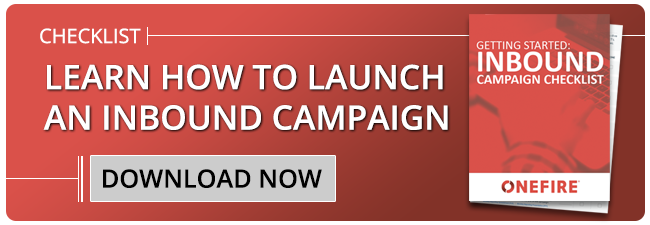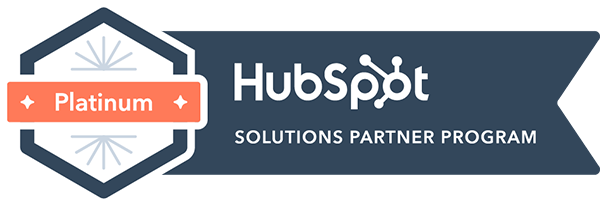 Your landing page is often where potential clients first land on your website, so it’s your big opportunity to make an excellent impression.
Your landing page is often where potential clients first land on your website, so it’s your big opportunity to make an excellent impression.
A landing page is the spot visitors are led to when they click on an ad, a link or a button from another site. It's meant to encourage visitors to take the next step toward becoming a customer, which could be signing up for your newsletter list, booking a call or buying a product.
Whatever your goals are for your insurance landing page, there are some effective elements that a high-converting landing page should include.
What is a Landing Page?
Consider your landing pages as the salespeople of your website. They are there to convert site visitors into leads. That means that every landing page you create should have a clear, specific call-to-action.
Typically, any landing page will go directly to a product or service that potential customers can buy from, or it could have a form for site visitors to leave their information in exchange for some kind of offer. These offers are also called “lead magnets,” because they attract new leads.
A lead magnet is often free, and it can be pretty much anything that your ideal customer would find valuable. It could be an ebook, email series, video series, printable, guide, valuable information, or anything else that you think would offer real value for people who land on your site. Consider it the first step to your paid offers or products.
Whatever your lead magnet is, it needs to be enticing enough for your site visitors to be willing to exchange their email address for it. Your landing page’s job is to explain - in a simple, credible, visually appealing way - why your offer is so incredible.
The Elements of a High-Conversion Insurance Landing Page
An attention-grabbing headline
When someone goes to your landing page, you have mere seconds to grab their attention. Don’t blow your chances to convert a new lead because of a dull, confusing or off-putting headline.
You want your headline to immediately tell your visitor what’s in it for them. If they stick around and sign up for whatever you’re offering, what are they going to get out of it?
It doesn’t matter whether you’re offering a free ebook or a life insurance policy; the goal is the same. You want the visitor to convert to a lead or a paying customer by the end of the page. Make sure your headline reflects what they’re going to get from your offer.
Fantastic copy
The copy on your landing page is very important. It needs to be clear, compelling and well-crafted. However, that doesn’t mean there has to be a lot of it. Again, people aren’t going to read a ton of copy. They want quick facts: What are you offering? Why should I get this information/service/product from you? What can I expect to get out of it? And what is it going to cost me?
Short, simple copy can be highly effective if it’s done well. But so can longer copy, if it’s really illustrating your offer in a compelling way. The key is to be very intentional with your copy, and to pay close attention to what seems to resonate with your visitors.
Clear call-to-action
A call-to-action (CTA) gives your site visitor something to do, and all landing pages need one. Big or small, expensive or free, it needs to be absolutely clear what that call-to-action is.
Your CTA will reflect the purpose of your landing page, so it might be encouraging your page visitors to buy a product, sign up for a service, book a call, or exchange their contact information for a lead magnet.
No distractions
Elsewhere on your site, it can be useful to link other posts, resources and pages that will help guide your visitors and give them more information. But your landing page should be there for one purpose only, and all the content on the page should support that purpose.
Avoid confusing your page visitors with additional links or information that distracts from your CTA.
Stay consistent to your brand
Your brand is about more than just colors and fonts. It’s about your overall message, and the tone you want to convey. If your brand takes a more formal, serious tone, then it’s going to be jarring to have a landing page with super casual content. You want brand consistency so that you can attract the clients who will resonate with your company, and what you have to offer. If your landing page doesn’t reflect that, then you risk attracting the wrong leads.
Say thank you
It’s a simple thing, but it’s really important to have a follow-up thank you page after a page visitor signs up for your offer. The goal here isn’t just to be polite; it’s also to confirm that you received their information, and you give them the next steps they should follow. Oftentimes, this message will tell them to check their email for their free download, scheduling link or receipt.
Test and adjust
Once your landing page is up and running, it’s important that you know how to test its effectiveness. You might have a goal in place for how many page visitors you want to sign up for your offer, how many people you want to sign up for consultation calls, etc. But there’s another great way to test your landing pages, and it’s through running different versions to see what converts the best. This is also known as A/B testing.
You can create slightly varied landing pages to test everything from headlines to colors to copy, and make note of what performs better. Over time, you’ll begin to gather data that helps you create even more effective landing pages.
How to Create a Successful Insurance Landing Page
Overall, the insurance industry has a tendency to lag in digital presence. A clunky, cluttered website can send the message that doing business with you would be difficult or confusing.
Think about making things easier for your ideal client, whether they’re an agent, policyholder, program manager or anyone else who is interested in working with you.
That’s where a landing page comes into play. If you can offer something that demystifies the process for your target customer, they’re going to see you as a business that can meet them where they’re at. Digital downloads, fact sheets, quick guides or video series can save them time and give you the opportunity to show how you work with your customers. But before they can experience your awesome offer, your landing page has to convince them to sign up for it. With the right setup, your landing page has the potential to convert visitors into leads, and give those leads a taste of why they should become customers.




